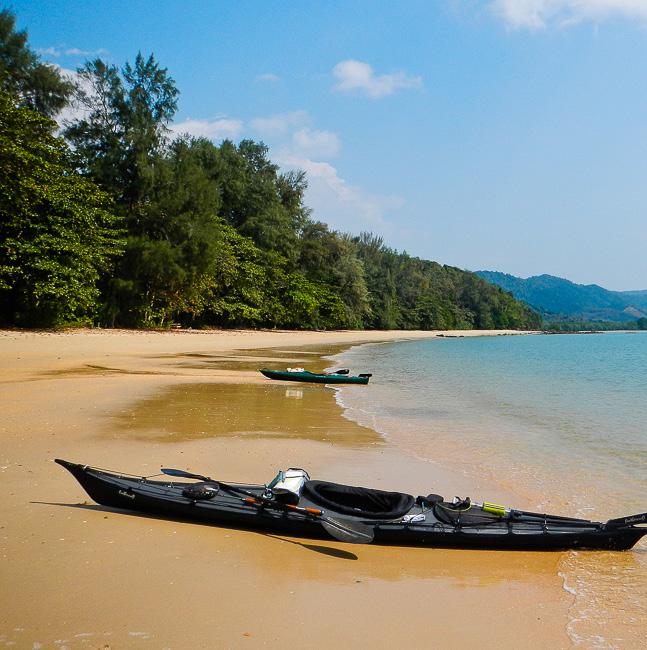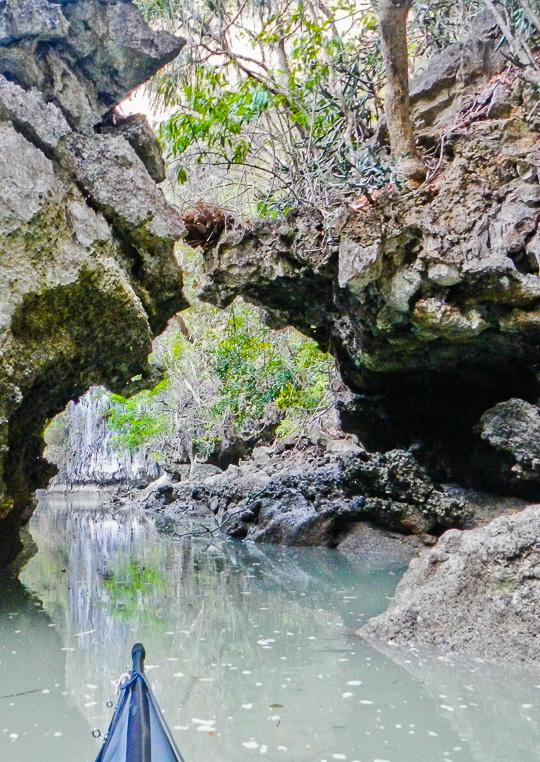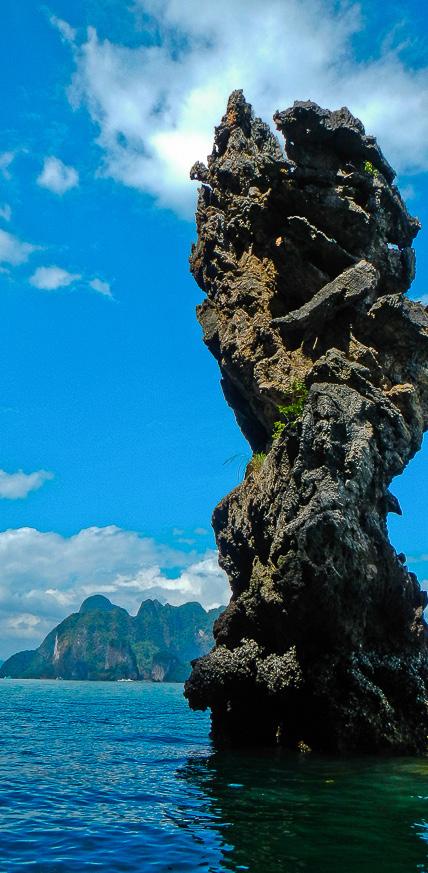
4 minute read
Adventure Travel: Sea kayaking Thailand’s coast
DESERTED BEACHES, MANGROVE FORESTS, TEEMING WILDLIFE
SEA KAYAKING ALONG THAILAND’S ISOLATED COAST HAS IT ALL
Advertisement
Story and photos by Tim Morch
“I can make Kang Khao Island,” my paddling partner said, “it’s only 15 kilometres.” We had just rounded the southwestern point of Phayam Island and conditions were good to cross the strong currents of Ratchakrut Channel.
Ian Taylor and I were on our third kayak expedition – this place is hard to shake – down 600 kilometres of Thailand’s western coast in 22 days. We were aboard two Feathercraft Wisper XPS collapsible kayaks, capable of handling the waters of the Andaman Sea.
A few hours later we landed on a narrow strip of beach, where the only signs of life were footprints of crab-eating macaques in the sand. Talk about getting away from it all.
Thailand has more than 3,000 kilometres of coastline and hundreds of islands, all surpris- ingly unknown to sea kayakers. Ranong province on the country’s unspoiled and unexploited western coastline is where you can camp safely. Friendly people here welcome visitors to empty beaches, massive mangrove forests and a few fishing villages on islands offshore.
Paddlers should note this coast is exposed to the Andaman Sea, so swell can be enormous, building across 2,000 kilometres of unim- peded waters between here and the Indian subcontinent to the west. So surf-launch and surf-landing skills are a must. As well, tidal forces can lift these waters as much as three and a half metres on the way up and fall the same distance six hours later.
Tide charts are widely available and anybody who paddles without one is a fool – you might have to lug gear several hundred metres across a muddy flat or watch your kayak float away as the water rises.

Land access to this coastline is limited. The mangrove forests of the 300-squarekilometre, UN-designated Ranong Biosphere Reserve and nearby Khlong Kapoe are the most northerly on this coast. Khlong (“estu- ary” in English) Kapoe has three long watery arms clawing inland. Paddlers heading south pass small fishing villages where the khlong’s arms converge and empty their waters into the sea after passing through a region largely protected as part of Laem Son National Park.
To get to that coastline, a good base is Phayam Island, roughly 25 kilometres from the tourist destination of Ranong. Rent a beachfront bungalow (they vary from typical Thai bamboo to air-conditioned resorts), get acquainted with the Andaman Sea, practise launch and landing and explore sheltered bays and mangrove forests. Phayam’s north point often provides a lesson in what can happen when swell, wind and tide collide.
Neighbouring Chang Island has a scattering of bungalows, allowing a leisurely two- to three-night trip around the island without camping. Explore the biosphere reserve and camp on nearby Sai Dam Island. The mainland national park at Bang Ben Beach lies at the narrow mouth of Khlong Kapoe. Use a flood tide to push you in to explore the estuary and let the ebb pull you out. Southward, in the tiny fishing community of Baan Talae Nok one family bunks visitors in their home.
Offshore, Mu Koh Kum Islands National Park is back in business after its offices were destroyed in the 2004 tsunami. Staff returned in 2013, so visitors can now spend a few days exploring these idyllic and uninhabited islands.
Crossing into northern Phang Nga Province, puts you in reach of three large islands. One of them, Ra Island, has a national park office on the northern end with camping, fresh water shower and a friendly park staff. Its west coast is dotted with stunning beaches, where a solitary sunset camp is yours.
A narrow channel separates mountainous Ra Island from the flat – and intensely bio-diverse – Phra Thong Island. A turtle breeding program, mangrove protection strategy and safari-style, savannah wildlife tours to view deer, storks and hundreds of bird species have been put in place since the tsunami.
Immense mangrove forests on the east side of these islands are reputed home to dugong and even a few saltwater crocodiles. Had I known this before I paddled through, I may have chosen another route. Local schoolchildren are learning about their environment and starting to lead nature tours. Rent a nearby bungalow on the west side beaches or camp next to Tawan Bar with Mr. Sak and enjoy southern Thai cuisine.
The northern half of Kho Khao Island has one lonely resort and long stretch of empty beach, a far cry from the southern half where resorts abound and the tourism engine revs up. It’s a good place to start the journey north to Phayam Island, hitting the spots you missed on the way down.
And perhaps discovering macaque footprints in the sand.
Tim Morch is a professional travel and adventure photographer who covers the world.










